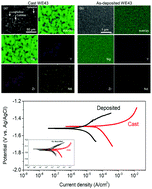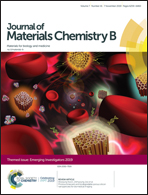Influence of chemical heterogeneity and microstructure on the corrosion resistance of biodegradable WE43 magnesium alloys
Abstract
Magnesium–yttrium-rare earth element alloys such as WE43 are potential candidates for future bioabsorbable orthopedic implant materials due to their biocompatibility, mechanical properties similar to human bone, and the ability to completely degrade in vivo. Unfortunately, the high corrosion rate of WE43 Mg alloys in physiological environments and subsequent loss of structural integrity limit the wide applications of these materials. In this study, the effect of chemical heterogeneity and microstructure on the corrosion resistance of two alloys with different metallurgical states was investigated: cast (as in traditional preparation) and as-deposited produced by magnetron sputtering. The corrosion behavior was studied by potentiodynamic polarization and electrochemical impedance spectroscopy tests in blood bank buffered saline solution. It was found that the as-deposited alloy showed more than one order of magnitude reduction in corrosion current density compared to the cast alloy, owing to the elimination of micro-galvanic coupling between the Mg matrix and the precipitates. The microstructure and formation mechanism of corrosion products formed on both alloys were discussed based on immersion tests and direct measurements of X-ray photoelectron spectrometry (XPS) and cross-sectional transmission electron microscopy (TEM) analysis.

- This article is part of the themed collection: Journal of Materials Chemistry B Emerging Investigators


 Please wait while we load your content...
Please wait while we load your content...